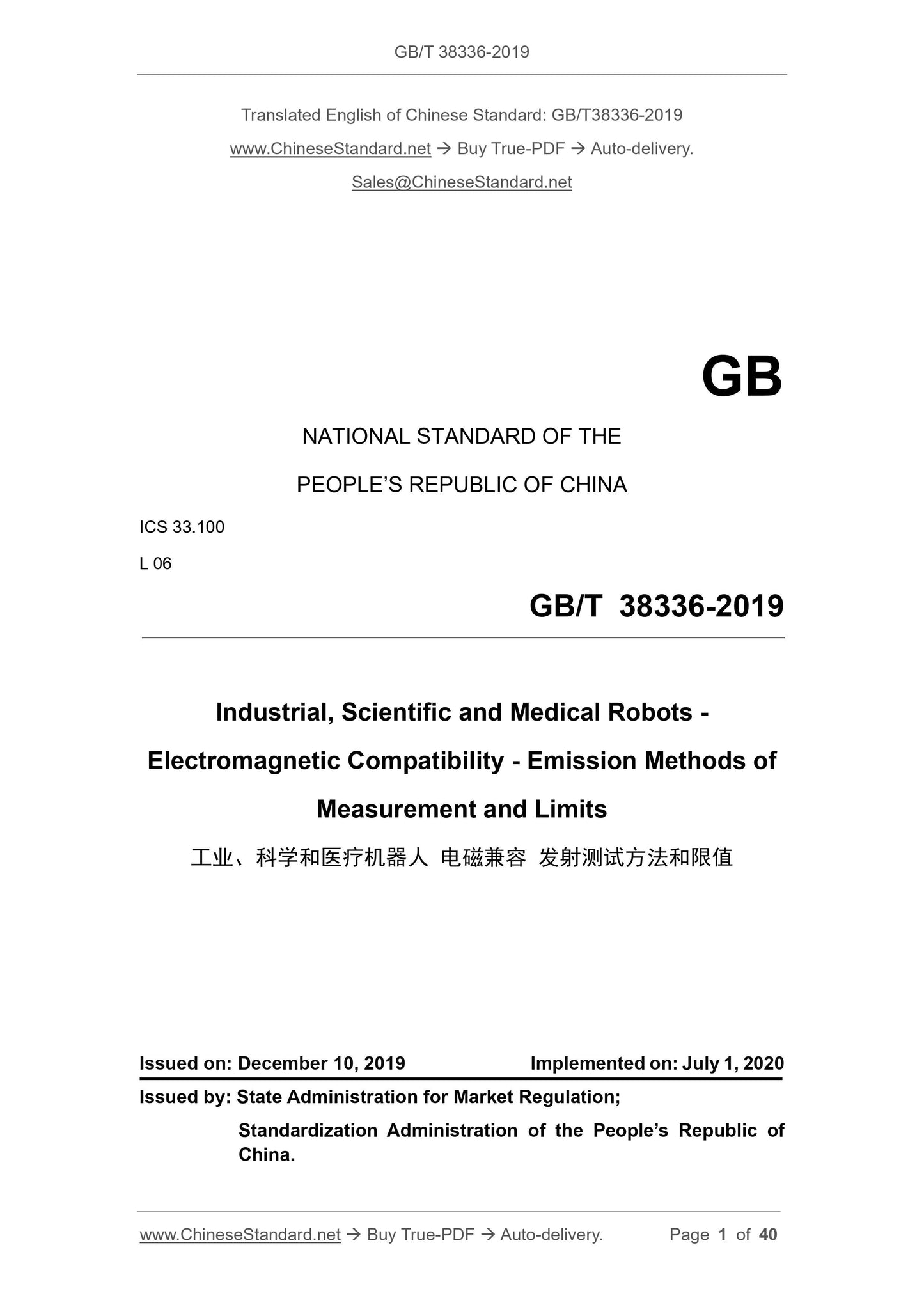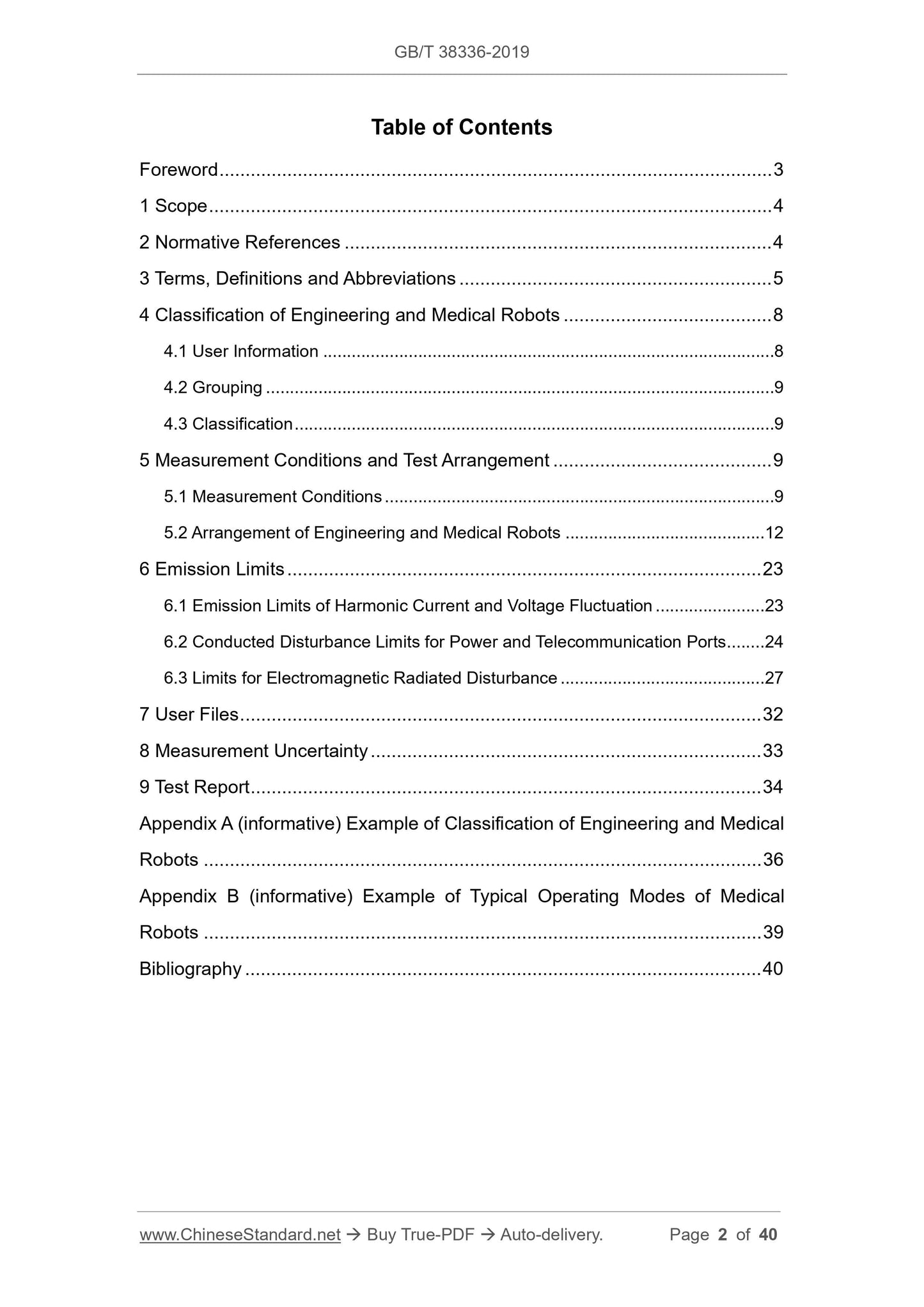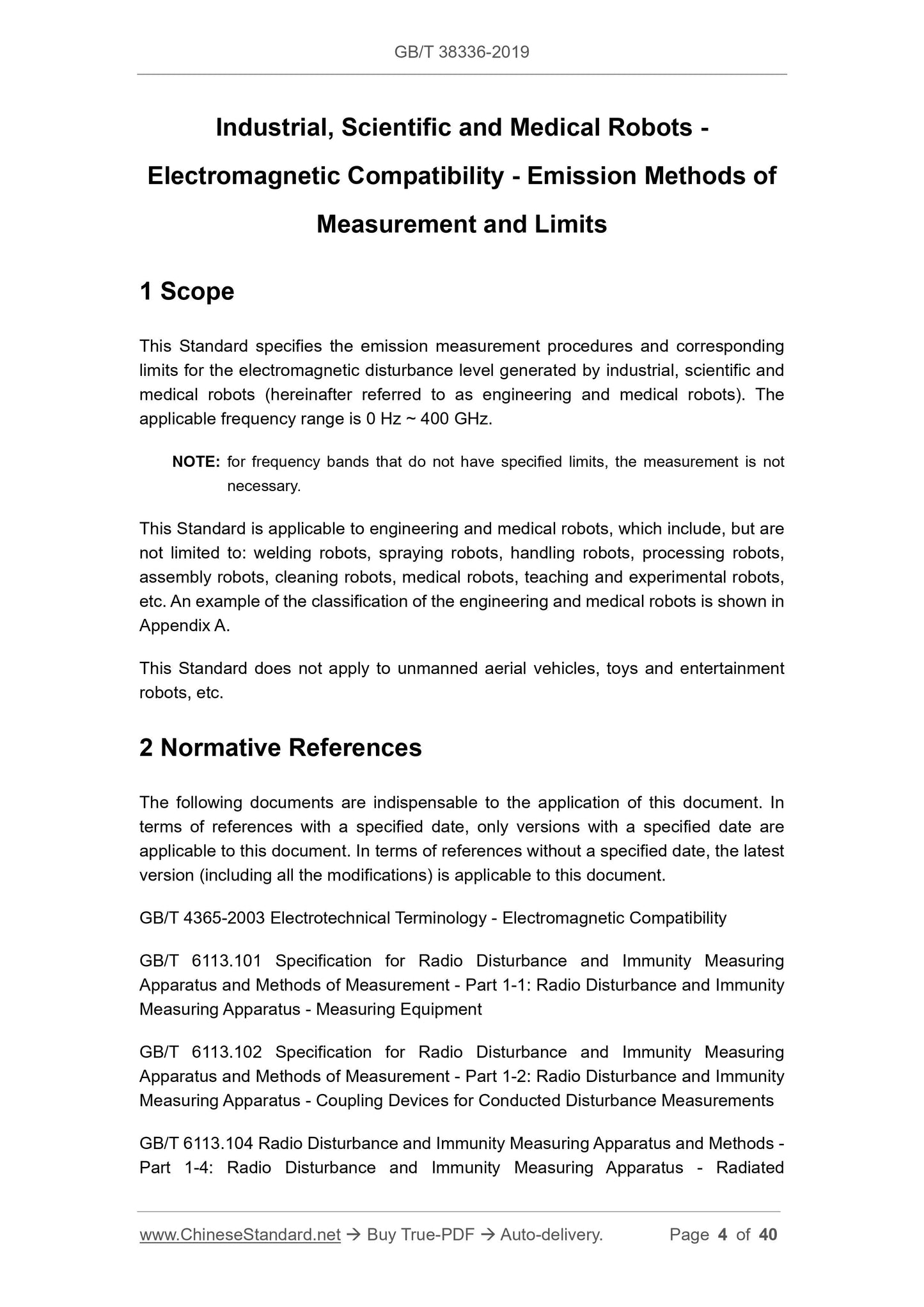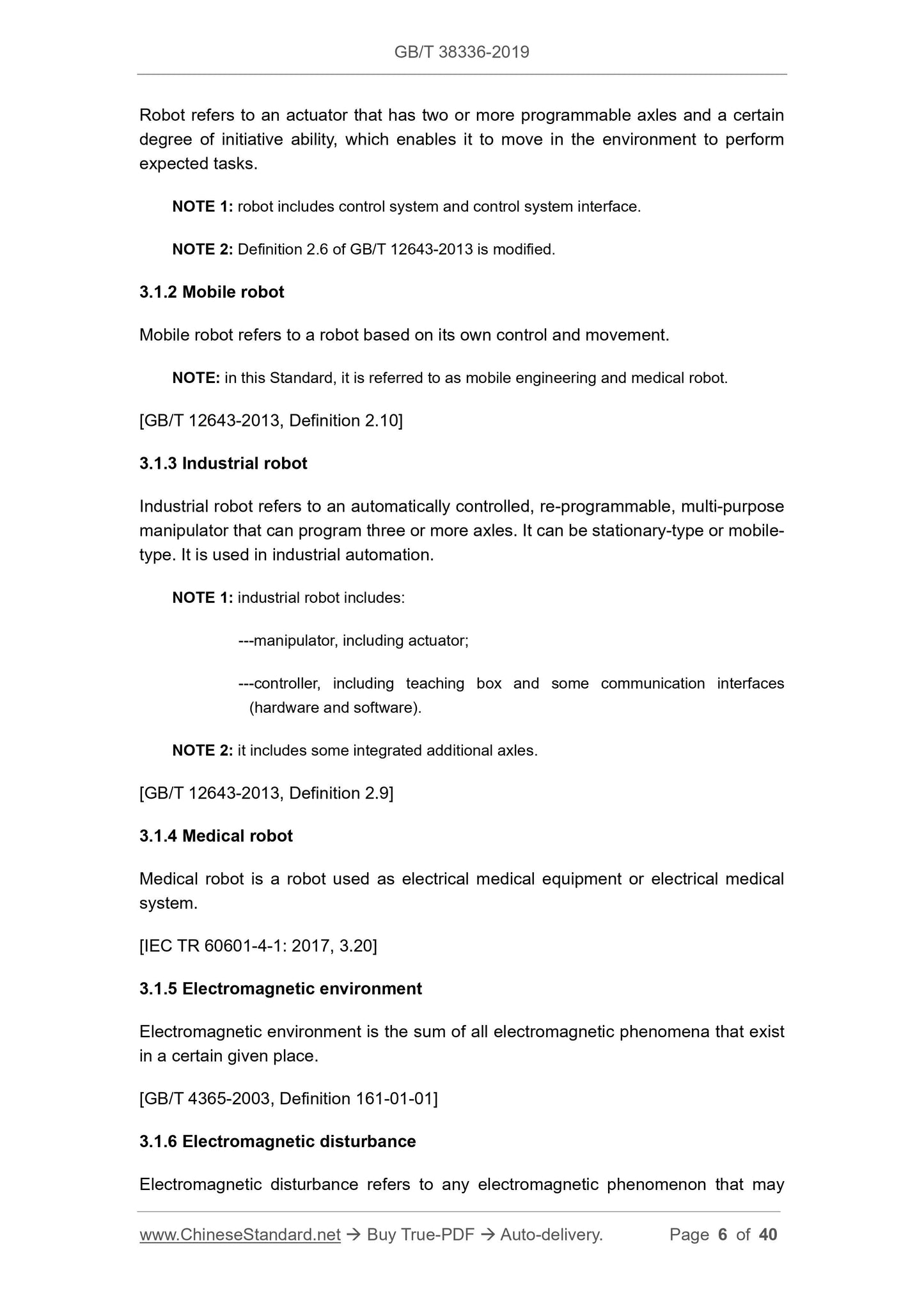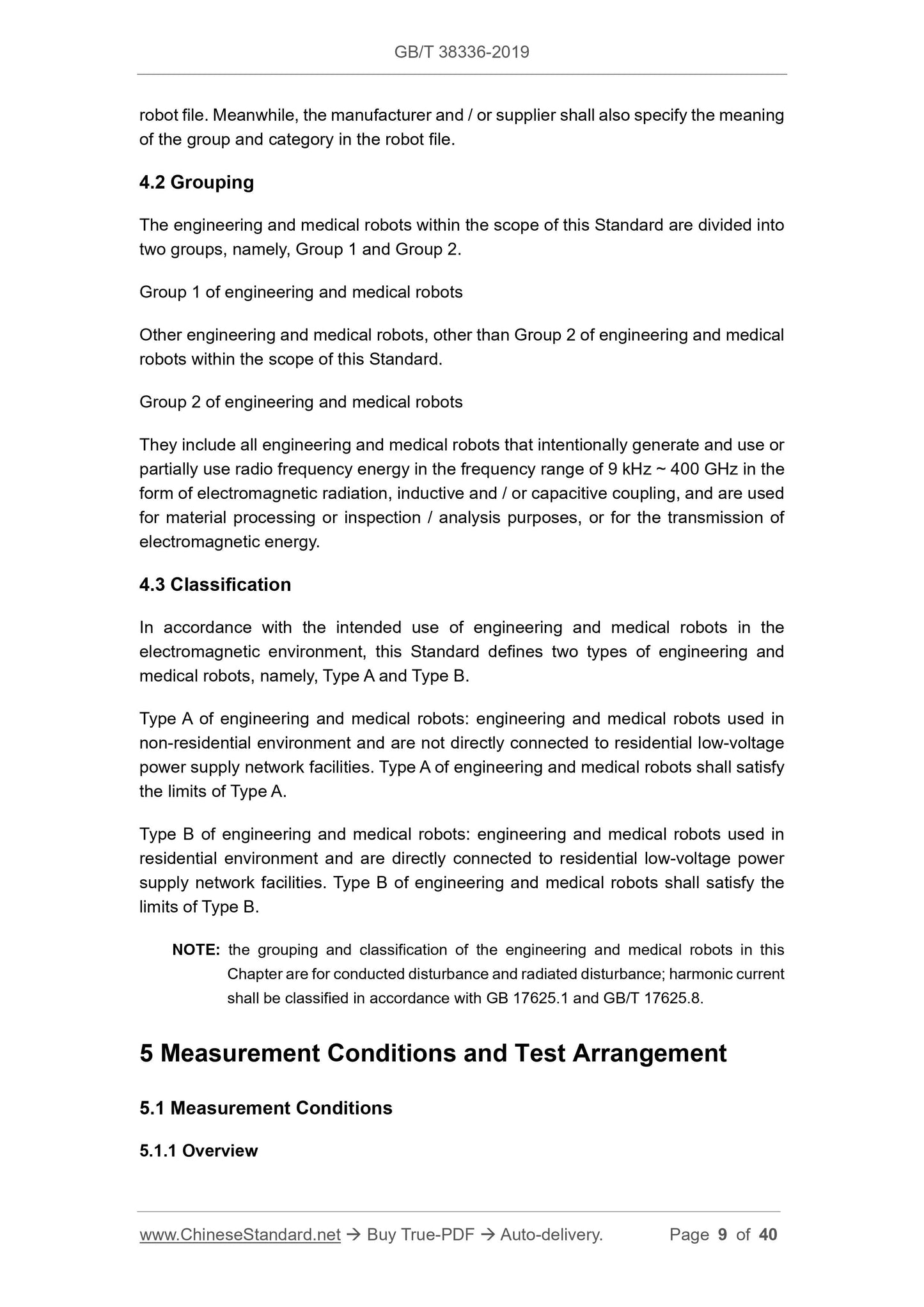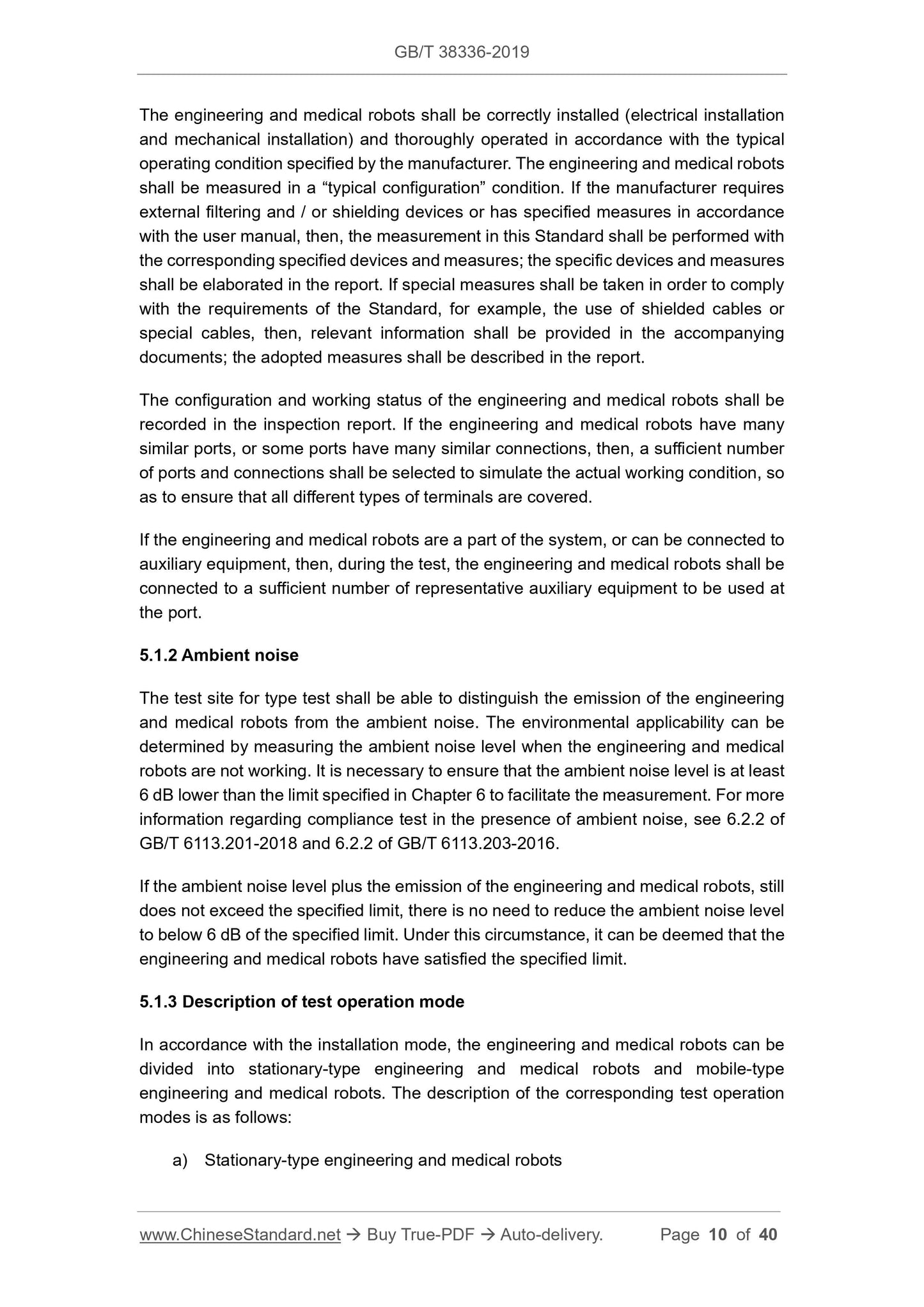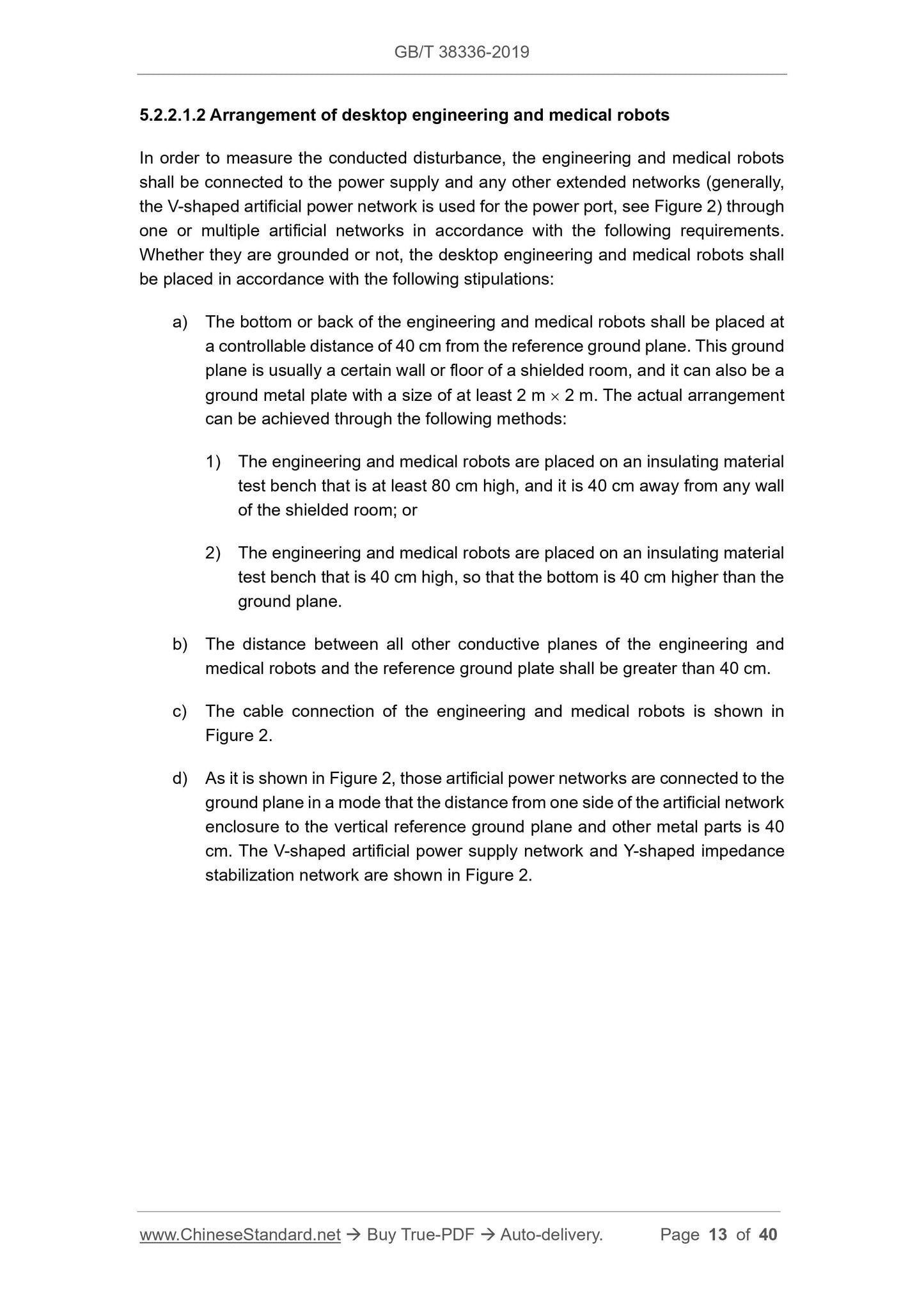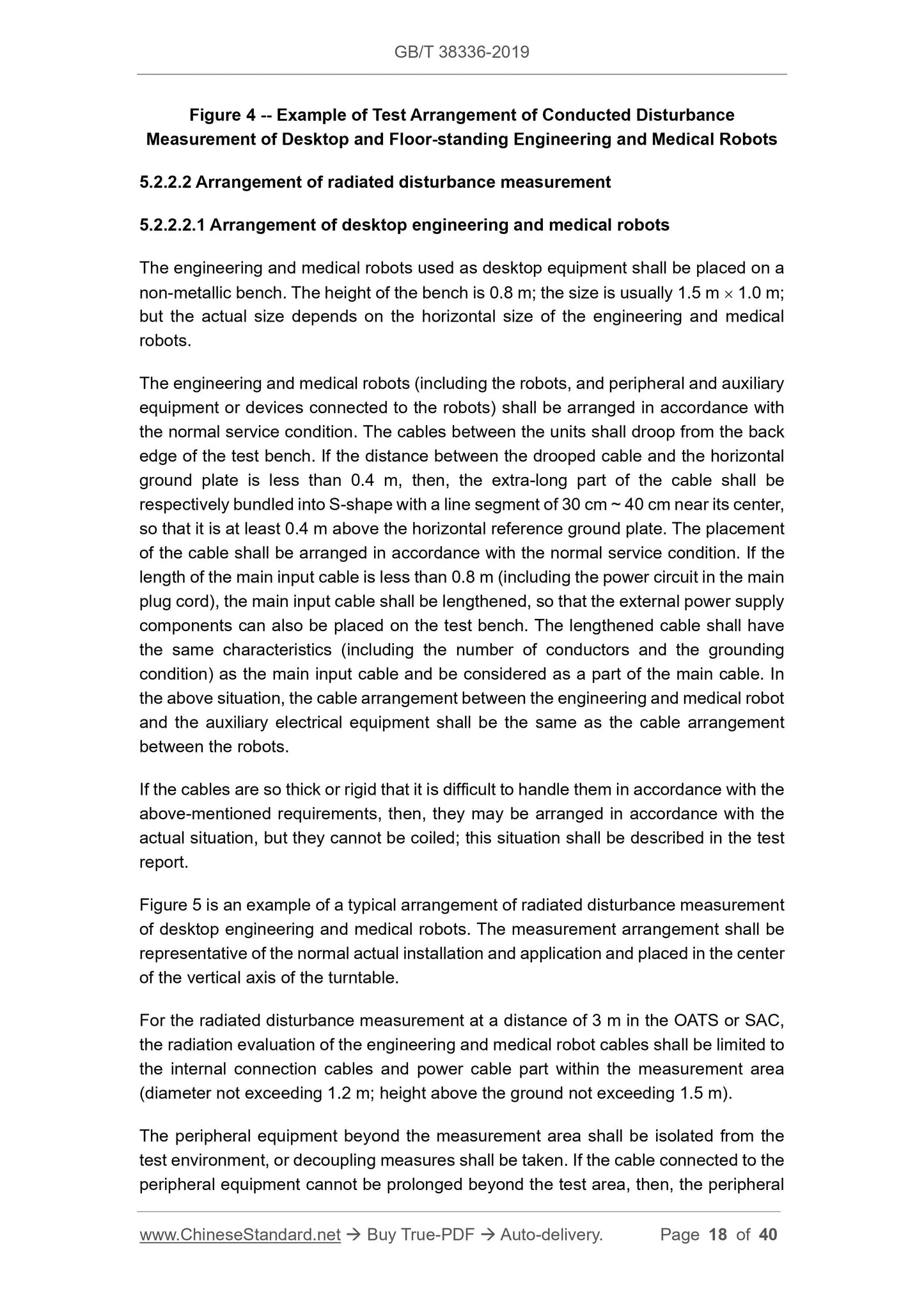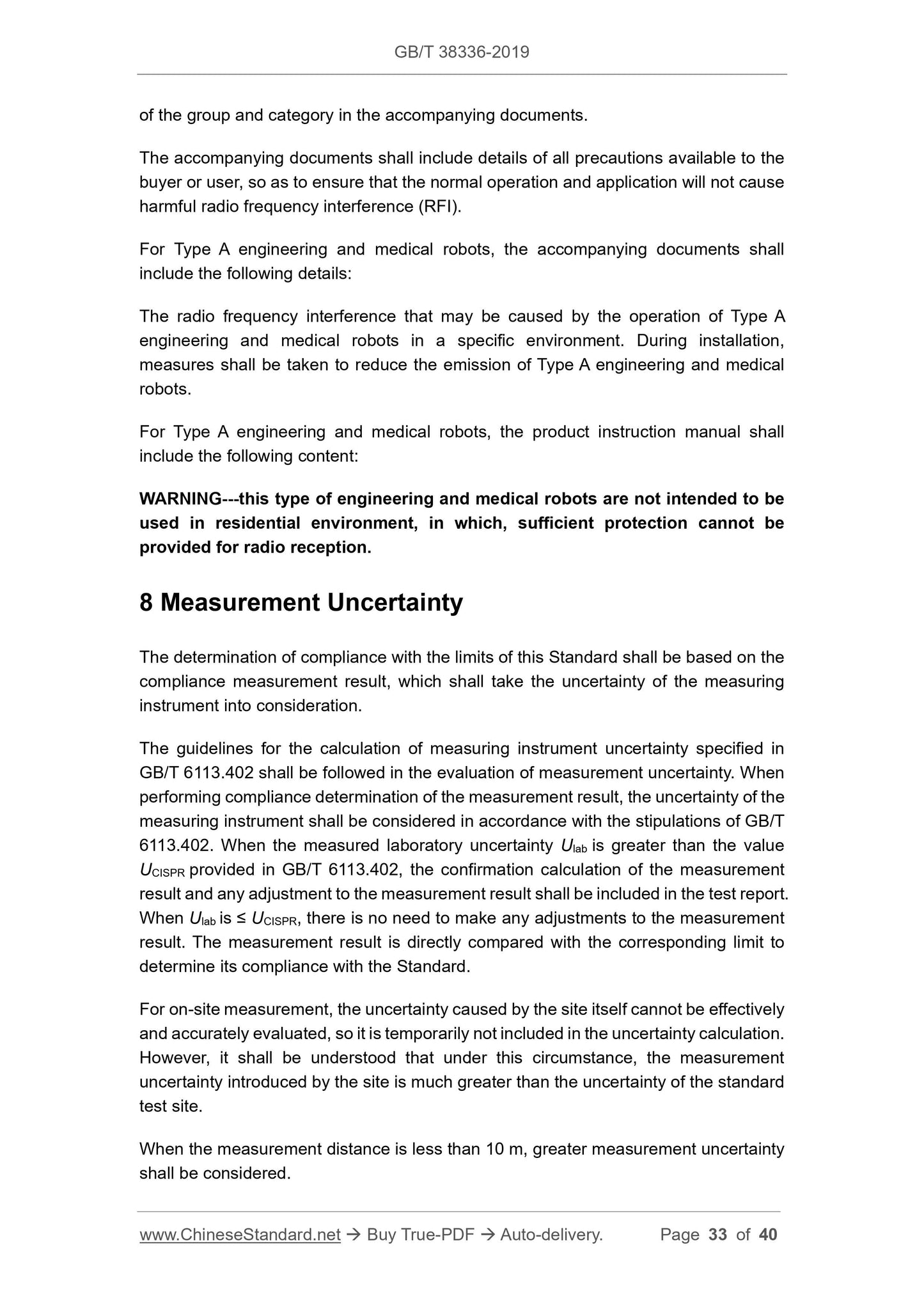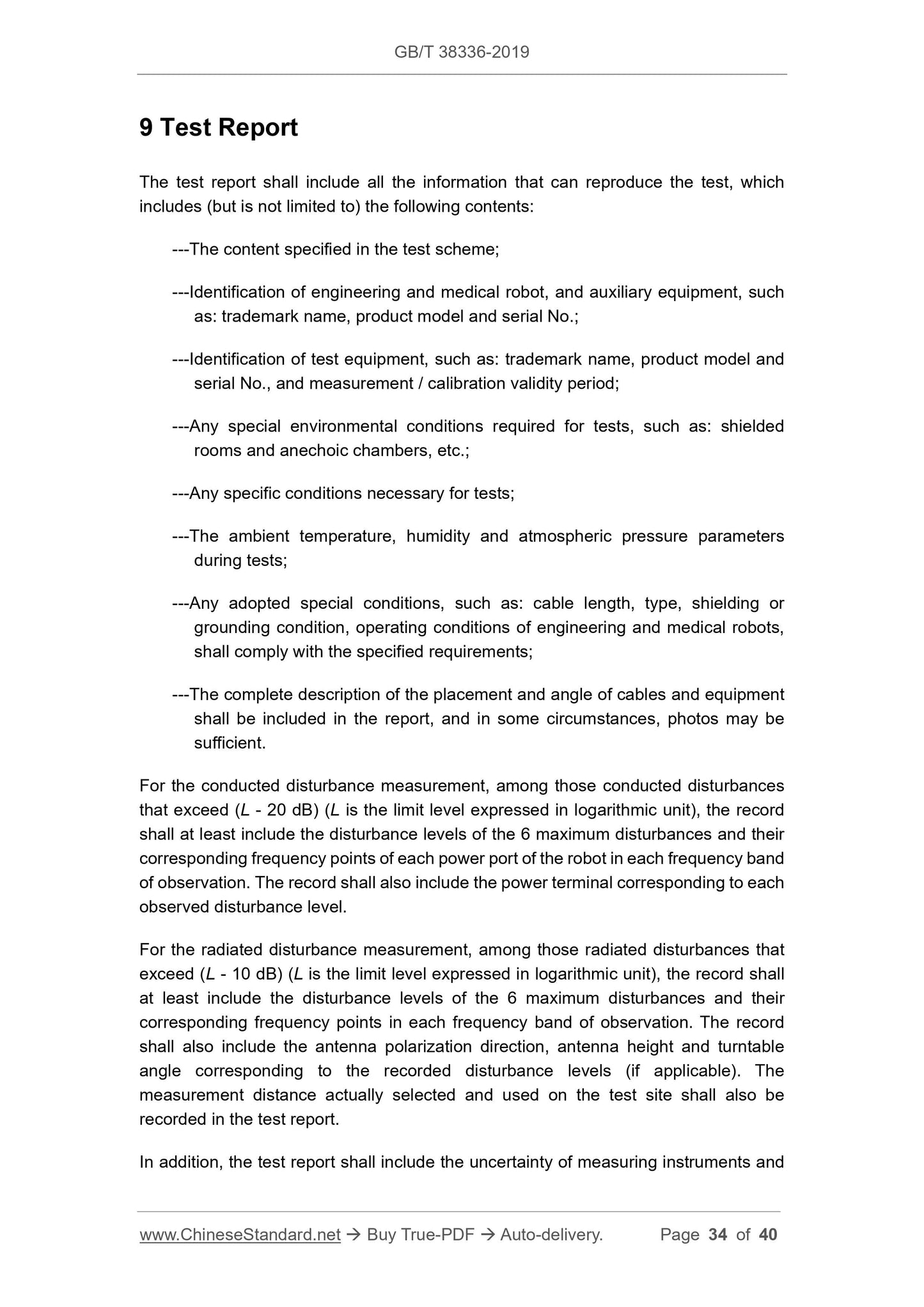1
/
of
10
www.ChineseStandard.us -- Field Test Asia Pte. Ltd.
GB/T 38336-2019 English PDF (GB/T38336-2019)
GB/T 38336-2019 English PDF (GB/T38336-2019)
Regular price
$490.00
Regular price
Sale price
$490.00
Unit price
/
per
Shipping calculated at checkout.
Couldn't load pickup availability
GB/T 38336-2019: Industrial, scientific and medical robots - Electromagnetic compatibility - Emission methods of measurement and limits
Delivery: 9 seconds. Download (and Email) true-PDF + Invoice.Get Quotation: Click GB/T 38336-2019 (Self-service in 1-minute)
Newer / historical versions: GB/T 38336-2019
Preview True-PDF
Scope
This Standard specifies the emission measurement procedures and correspondinglimits for the electromagnetic disturbance level generated by industrial, scientific and
medical robots (hereinafter referred to as engineering and medical robots). The
applicable frequency range is 0 Hz ~ 400 GHz.
NOTE: for frequency bands that do not have specified limits, the measurement is not
necessary.
This Standard is applicable to engineering and medical robots, which include, but are
not limited to: welding robots, spraying robots, handling robots, processing robots,
assembly robots, cleaning robots, medical robots, teaching and experimental robots,
etc. An example of the classification of the engineering and medical robots is shown in
Appendix A.
This Standard does not apply to unmanned aerial vehicles, toys and entertainment
robots, etc.
Basic Data
| Standard ID | GB/T 38336-2019 (GB/T38336-2019) |
| Description (Translated English) | Industrial, scientific and medical robots - Electromagnetic compatibility - Emission methods of measurement and limits |
| Sector / Industry | National Standard (Recommended) |
| Classification of Chinese Standard | L06 |
| Classification of International Standard | 33.100 |
| Word Count Estimation | 30,395 |
| Date of Issue | 2019-12-10 |
| Date of Implementation | 2020-07-01 |
| Issuing agency(ies) | State Administration for Market Regulation, China National Standardization Administration |
Share
